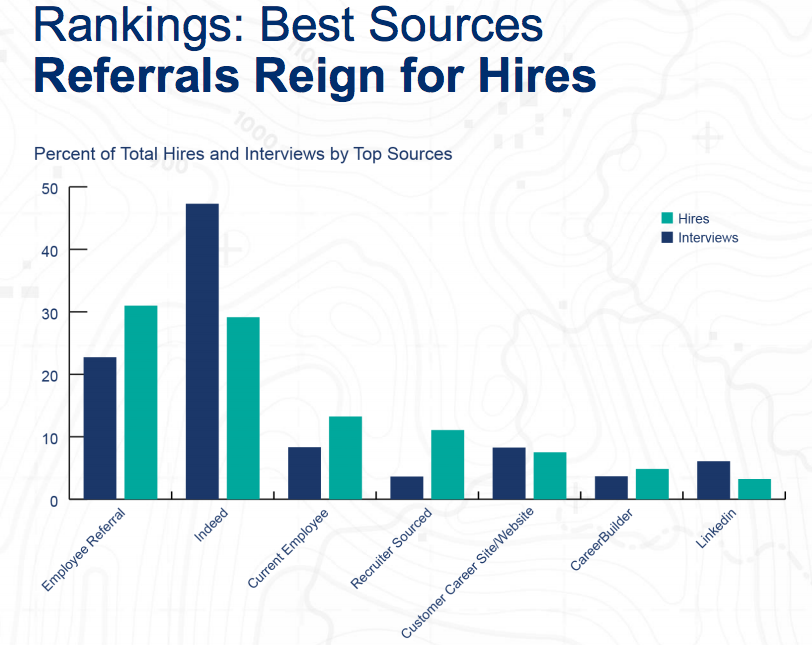Just got off the spring HR conference season, although it seems like the HR/TA conference season is now never ending. It used to be the conference season for HR and TA conferences were spring and fall, with the one outlier being SHRM National at the end of June. Now, you can go to a conference in any month of the year!
As one of the many people in our industry that writes, speaks, etc. Some folks would consider me a person who has some influence in the space. I certainly don’t have the most influence, but I do okay. My wife likes to call me a ‘micro-celebrity’, meaning I have about 23-ish HR pros around the world who know who I am, and might want a hug when they see me!
When you go on the HR/TA conference circuit, as an influencer, you get humbled very quickly, as you run into conferences where your influence is minimal, and come conferences where you’re the rock star. I just came back from a conference where I was humbled, so I wanted to share how you can tell your value at a conference as an influencer!
It’s the size of the hotel room they give you!
Let me break down the ratings of Influence “5” being the highest influence, “1” being the lowest influence in the HR space:
Level 5 HR/TA Influencer: You’re in the suite life! Gerry Crispin is a level 5 influencer! I was at a conference with him recently and his “room” was actually 4 rooms with a breakfast nook, two fireplaces, and a hot tub! That’s influence! We won’t talk about my room as compared to his! Level 5 Influencers also are picked up at the airport by someone holding a sign with their name on it. Probably have a gift basket in their room that includes something cool like a pair of Beats by Dre or Oakley sunglasses or something. Most level 5 influencers do not attend conferences for free, many of these gigs are paid gigs. (I’m not saying Gerry was paid, just that those at level 5 can get paid if they desire)
Gerry is a level 5 influencer because TA buyers listen to what he has to say. If Gerry says buy “X” software/product, people will buy. If he says “Y” software/product is crap, people won’t buy. Don’t tell me you’re a level 5 influencer without being able to move the market!
Level 5 HR/TA Influencer upgrade moment – Kyle Lagunas had a giant suite on top of the Bellagio in Vegas this year. I got invited. It was HR nerds acting like rappers, and it was awesome!
Level 4 HR/TA Influencer: You get to stay at the same hotel as a Level 5 influencer but you don’t get the same room! You probably don’t get the private ride to your hotel from the airport, but they’ll send you a note on what shuttle to take, you might even get the gift basket, but you will never get the breakfast nook! Level 4 and 5 influencers also are personally invited to these conferences, they never have to ask to attend. You’ve reached a certain level when you’re no longer begging to come to an event and work for free!
Once you reach level 4 you start getting invited to private dinners with vendors. Really nice meals at restaurants you would never go to unless someone else was paying and ordering drinks you wouldn’t if you were paying the tab.
Level 3 HR/TA Influencer: Welcome to the Hampton Inn, are you a Hilton Honors member? If so, we can get you a free bottle of water and move you to the top floor! Level 3 Influencers have made it to the land of not having to pay their own way to a conference, congratulations, that’s actually a huge step! The expectations though for this honor will be you’ll be writing, tweeting, IG’ing, Facebook live’ing, Snapping your life away for two straight days. It’s a big step to reach level 3, but that step comes with a lot of work conference organizers expect from you. At level 3 you’re probably booking your own hotel, flight and sharing an Uber to the event. But, you can turn those expenses in and get reimbursed.
Most likely at level 3 you probably had to ‘apply’ to attend the conference. Someone took a look at your name and others who applied and determined you carried enough influence to make the ‘list’. No one was contacting you asking you to come, but to be in the game, you must play the game! Level 3 influence comes with VIP access to the big HR parties, which usually means you don’t have to stand in line!
Level 2 HR/TA Influencer: You’re paying your own travel, but enough level 3-5’s didn’t want to come to our event, so we’ll give you a free pass to get in! With this free pass, we’ll make you dance like a monkey and do anything else we ask. Where a t-shirt with your logo? Sure! Many level two’s will bunk up in a two queen room. I once asked Kris Dunn if he wanted to share a room and he wouldn’t talk to me for a month! He was definitely not at level 2!
Level 1 HR/TA Influencer: At level 1 you’re paying your own way for everything. Travel, conference admission, etc. You’re probably sharing an Airbnb with other level 1’s and 2’s to help offset the cost, but you’ve got a dream, the Gerry Crispin 4-room suite dream! Plus, you can probably make at least a meal or two from snacks and candy given out at expo booths, and some giant HR vendor will have a huge party you can attend with the rest of the heard!
Some vendors completely screw themselves when they don’t understand the levels! If you’re a level 5 and a vendor treats you like a level 3, you can best believe you’ll never go back to that event! But, if you treat a level three, like a level 4 or 5, you just created an influencer friend for life! It works both ways!
The key for vendors is to try and get the most value for the level. It’s Moneyball! I want an up and coming level 3, who will probably be a 4 or 5 soon, to be at my event! I can get level 4 or 5 influence, on a level three budget. The hard part for all vendors is understanding who actually has real influence and who’s just pretending. Since I wrote the HR/TA Influence levels, I’m putting myself down as having some influence! 😉


